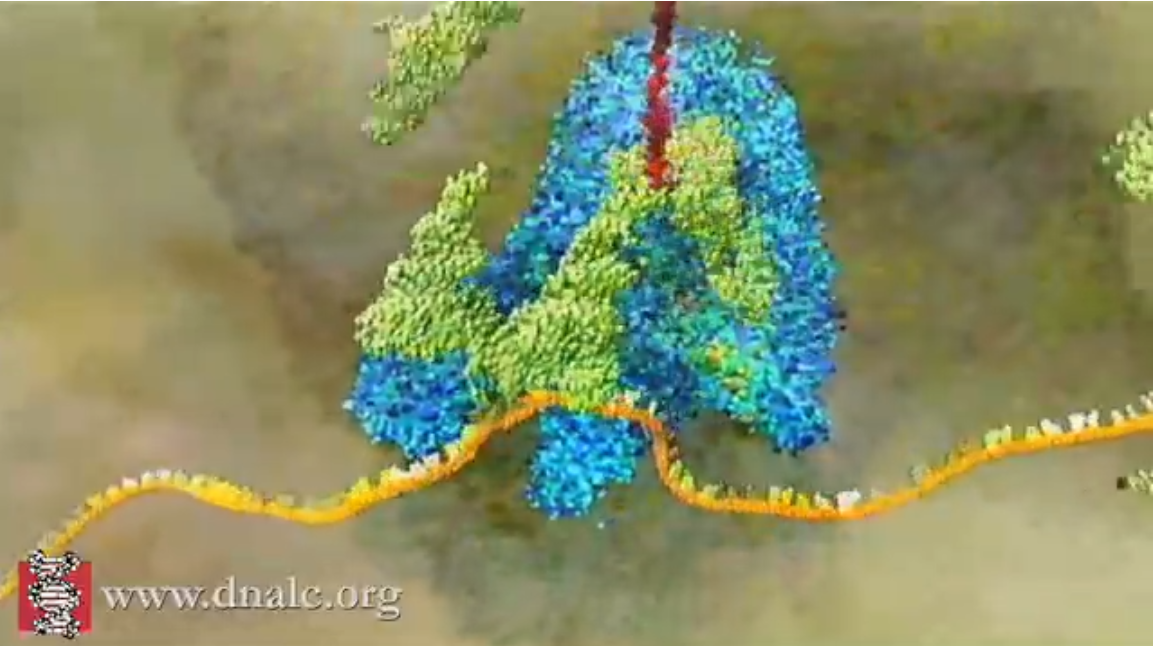Monday, 31 October 2022
A set of stunning animations
 Today I want to let you know about a set of stunning animations produced by the DNA Learning Center, which was founded by the Cold Spring Harbor Laboratory in 1988 to educate the general public about issues related to genetics. The DNA Learning Center’s Biology Animations web page contains some 50 animations about DNA, RNA, proteins and their complex interactions. Most of these animations are just a few minutes long, and all of them are are so realistic that they take your breath away—a far cry from the 2D and 3D animations that you may have seen where everything is smooth and steady and all the colours are uniform. Instead, in these animations, everything moves and pulsates, as if you were moving through the living molecular jungles inside the tiniest human cells.
Today I want to let you know about a set of stunning animations produced by the DNA Learning Center, which was founded by the Cold Spring Harbor Laboratory in 1988 to educate the general public about issues related to genetics. The DNA Learning Center’s Biology Animations web page contains some 50 animations about DNA, RNA, proteins and their complex interactions. Most of these animations are just a few minutes long, and all of them are are so realistic that they take your breath away—a far cry from the 2D and 3D animations that you may have seen where everything is smooth and steady and all the colours are uniform. Instead, in these animations, everything moves and pulsates, as if you were moving through the living molecular jungles inside the tiniest human cells.
To give you an idea of what these animations have to offer, I’m going to recommend several of them and an order in which to watch them. Start with Transcription (Basic), which presents the process by which genes (segments of DNA) are copied into messenger RNA inside our cell nuclei. This animation shows details such as how numerous proteins (here called transcription factors) bind to the DNA to “unzip” it and expose the complementary nucleic bases that will form the messenger RNA.
Next, watch the animation on RNA Splicing, the operation by which certain sections of the messenger RNA, known as introns, are removed by enzymes, leaving only the coding parts of the RNA, known as exons, to manufacture a protein. (Again, all of this happens inside the nucleus of the cell.)
Then view the animation Translation (Basic), in which the messenger RNA emerges from the the cell nucleus into the cell body, where macromolecules called ribosomes bind to it. Using another type of RNA, called transfer RNA, the ribosomes then form a veritable production line, assembling amino acids into the protein according to the instructions that the messenger RNA brought from the DNA. Personally, this is the most realistic depiction that I have ever seen of this translation process. The first time I watched it, I was genuinely moved— no kidding! I’d been reading and hearing about this process for years, but the only visuals I had seen were either static drawings or clunky, step-by-step animations. To see what was pretty close to the real thing in real time was quite the revelation.
I also recommend you watch three other animations on this site, just to see the contrast between past animations and the kind of hyper-realistic animation that is possible now. The first, Replicating the Helix, shows how DNA replicates: just before a cell divides, the two strands of the DNA molecule separate, and each then reconstructs its missing partner to form two identical strands.
But this animation simply illustrates the theoretical principle. You should also watch Mechanism of Replication, which shows the same process, but with all the details of the associated proteins that are necessary for replication. Once again, the difference is striking!
And last but not least, watch Cell Signals, a 14-minute animation that combines several of the mechanisms that I’ve just mentioned and shows how they come into play when a boy injures his knee, breaking a blood vessel, and his body’s cells go to work to repair the damage.
From the Simple to the Complex | Comments Closed







